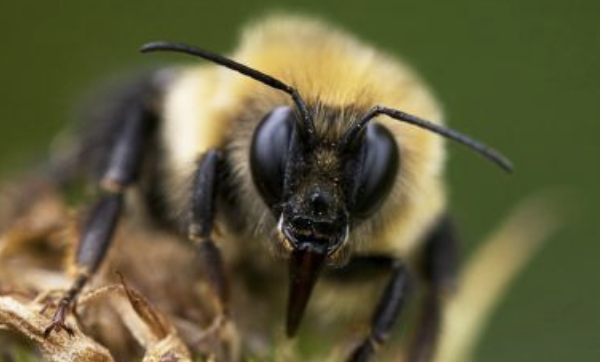Taking refuge from the coronavirus pandemic, wildlife filmmaker Martin Dohrn set out to record all the bees he could find in his tiny urban garden in Bristol, England, filming them with one-of-a-kind lenses he forged on his kitchen table.
The documentary, which kicks off Nature’s 40th season on PBS, follows Dohrn during the COVID-19 lockdown of spring and summer 2020, as he becomes bee obsessed and develops relationships with individual bees. Filming more than 60 species of bees, from Britain’s largest bumblebees to scissor bees, which are the size of a mosquito, Dohrn observes how differences in behavior set different species apart from each other. Eventually, he gets so close to the bees, he can identify individuals just by looking at them.
Viewers will marvel at moments timely captured in My Garden of a Thousand Bees, such as bees laying tiny eggs preparing for the next generation, green-fanged spiders feasting on male flower bees and a female yellow-faced bee attacking a Gasteruption wasp to protect her nest. Other fascinating behavior featured in the program includes two male bees fighting each other over a female, different species of bees competing over territory and one busy bee building a nest with a shell and hundreds of sticks. Intrigued by the intelligence of one particular wood-carving leafcutter bee, Dohrn dubs her “Nicky” and sees life at her level as she leaves a lasting legacy in the garden (Source).
Organization: PBS
PBS and their member stations are America’s largest classroom, the nation’s largest stage for the arts and a trusted window to the world. In addition, PBS’s educational media helps prepare children for success in school and opens up the world to them in an age-appropriate way (Source).
